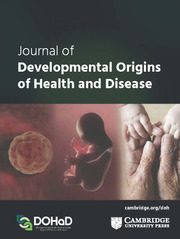No CrossRef data available.
Article contents
Factors associated with attrition in a diverse birth cohort study in Detroit, Michigan
Published online by Cambridge University Press: 18 February 2025
Abstract
Long-term birth cohorts are essential for studying health and disease over the life course. The retention of participants remains a challenge in study design. Previous research works on attrition are limited in length of follow-up time and lack of racial/ethnic diversity. Using data from the Wayne County Health, Environment, Allergy, and Asthma Longitudinal Study (WHEALS; United States cohort born between 2004 and 2007, n = 1258), we first performed longitudinal latent class analyses to identify patterns of participation spanning the prenatal period and six follow-up timepoints: 1, 6, 12, and 24 months; 3–6 years; and 10–12 years. Data collection included a combination of in-person visits, home visits, home specimen kits, and staff-administered questionnaires. We examined associations between baseline factors and participation class using multinomial logistic regression modeling, and with conditional inference modeling to identify variables most strongly associated with class. We identified four participation classes: high early participation with gradual loss-to-follow-up, sporadic participation, consistently high participation, and consistently low participation. Multiple baseline characteristics were associated with participation class. The “consistently high participation” class was disproportionately composed of participants who were older, were of higher education, had private insurance, had suburban residence, and were with higher income. Conditional inference trees identified maternal education, insurance, and income as most strongly associated with participation class. Through latent class modeling, we show that participants who were lost to follow-up fell into distinct groupings of participation. In the future, preparatory communications with those who are at the highest risk of study discontinuation may improve long-term retention.
Keywords
- Type
- Original Article
- Information
- Copyright
- © The Author(s), 2025. Published by Cambridge University Press in association with The International Society for Developmental Origins of Health and Disease (DOHaD)



